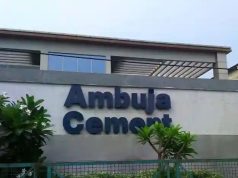When Humans Lived Inside the Earth
A few years ago, a teacher told me an interesting story about an 8th class student. She narrated how this student thought that humans lived inside the earth and if a rocket were to be launched, the earth would part and the rocket would leave for the sky. The same teacher then went on to tell another story where she had to explain to the children how a whole community of emperor penguins huddle together to protect and incubate a single egg. I would have loved these stories if it were some creative story telling class but this was during a visit to a supplementary class in Mumbai run by a leading NGO working on education.
The legendary song ‘Another Brick in the Wall’ by Pink Floyd epitomized a system of education in England in the 50s and 60s that was rigid, oppressive and termed ‘talk and chalk’ mode of education. Apart from a few elitist and alternate schools in India, we are still stuck to a similar system (excluding the oppression) which encourages rote learning and discourages critical thinking or the ability to analyze. The Right to Free and Compulsory Education Act (RTE) was passed in 2009 and implemented in 2010, 62 years after India’s independence legalizing education as the first and basic right of every child in the country. With a large government budget (which is still less considering the massive task), education cess paid by honest tax payers and education being the most sought after cause for most international and domestic donors and wps, it would seem that in the very least, the levels of literacy were headed towards some improvement. But as per rural findings of ASER (Annual Status of Education Report) 2013, ‘the proportion of all children in Std. V who can read a Std. II level text decreased each year from 2009 to 2012, dropping from 52.8% in 2009 to 46.9% in 2012’.
The RTE has been lauded for putting the responsibility of enrollment, attendance and completion of elementary school on the government, a first in the world. Considering the lack of success in implementation of most laws and schemes in India and some critical lacunae in the RTE Act itself, it’s most important objective of ‘equitable and quality’ education, an aspect which could have given children an opportunity to explore their full potential, now seems like a humungous task. Christine Charles, who has worked with a few well known education NGOs explains that quality is interlinked with many aspects including teachers to children ratio, a structured evaluation process in the absence of an exam-based evaluation system, the quality of teachers and a highly critical requirement for their training and then the curriculum itself.
In my course of work, I had the opportunity to observe a model of education conceptualized by eminent educationist, Dr. Anand Dyal Chand and Mrs. Alda Dyal Chand and implemented in 10 zila parishad schools of Marathwada (Maharashtra) by Oxfam India and its partner NGOs. This model was called Samajshala or Community School and was based on the premise that education is the responsibility of the community themselves. Many of its features were similar to RTE but the model was implemented much before the law was passed. Samajshala’s key features were community ownership of the entire process of school education through the formation of EDCs (Education Development Committees); training and involvement of teachers and para-teachers (Shikshan Sahayaks) in the education process; various child development initiatives like Bal Bhavan or a centre for co-curricular activities, computer labs and Bal Mantri Mandal or Children’s Cabinet with various sub-departments for health, environment, education, games etc; and getting the government officials involved in the system. In the few years of its implementation, there was 100% enrollment and retention of students with a focus on girl-children, it encouraged child-to-child learning and child-to-community initiatives and it affected a big improvement in the performance of students with some of them winning awards at the district level. But the best outcome was that the children looked forward to going to their government school every day!

One can find a lot of success stories across the country, but what stood out in this initiative for me was the fact that it addressed the issue of lack of quality education from a holistic perspective by just focusing on one critical aspect – community participation. There was no need to innovate or reinvent the wheel.
Unlike a lot of children, I was fortunate to have a science tutor during school days who never taught me Math or Science. All he asked me to do was to understand a given problem and explain it back to him. That ability to analyze any problem not only helped me to do well in all science subjects in my boards but it still holds me in good stead in various aspects of life. Similarly, a system of education should not be to just provide a job in future, but help children develop an ability to think critically which in turn can help them achieve their true potential.












